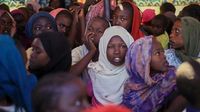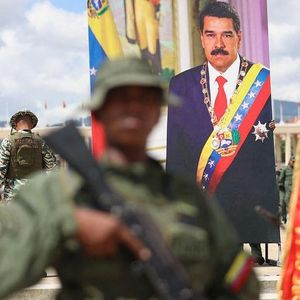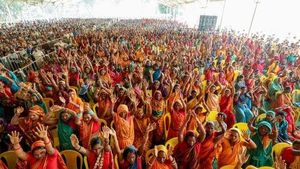In late October 2025, the city of El-Fasher in Sudan’s Darfur region became the focal point of a brutal conflict that has shocked the world and left tens of thousands of civilians in desperate need. The city, once home to approximately 260,000 people, was seized by the Rapid Support Forces (RSF) on October 26, marking a grim escalation in Sudan’s ongoing civil war. What followed, according to multiple investigations and eyewitness accounts, were atrocities on a scale rarely seen in recent memory.
Open-source investigations spearheaded by the Sudan War Monitor and Yale University’s Humanitarian Research Lab, as reported by RFI, have painted a chilling picture. Using videos posted online by RSF fighters themselves, satellite imagery, and survivor testimonies, researchers documented a campaign of violence that swept through neighborhoods, hospitals, and homes. One particularly harrowing video shows RSF fighters stepping over bodies inside El-Fasher’s Saudi Hospital. In the footage, a wounded patient attempts to sit up—only to be shot at close range. “There’s one still alive—kill him!” a fighter shouts, before the camera pans outside to reveal dozens more corpses in civilian clothing scattered in the hospital courtyard.
These scenes were not leaked by whistleblowers or hidden from public view; rather, they were filmed and proudly posted by the RSF themselves. According to the Sudan War Monitor, this was part of a systematic campaign of violence, with paramilitaries executing civilians—sometimes along ethnic lines—and terrorizing those who tried to flee. In one clip, a female RSF member urges her comrades to “go and rape the women,” a chilling echo of the sexual violence that has been widely reported across Darfur since the conflict reignited in April 2023. Another video shows RSF fighters taunting kneeling captives, including Dr. Abbas, a respected psychology professor from El-Fasher University, as they demand ransom money from their families. Yet another features an officer known as Abu Lulu mocking civilians moments before executing them. Despite claims by the RSF that Abu Lulu was arrested, subsequent footage showed him walking free.
Satellite analysis by Yale’s Humanitarian Research Lab added another dimension to the evidence. According to Nathaniel Raymond, the lab’s executive director, satellite images captured immediately after the RSF takeover showed dark shapes—between 1.3 and 2 meters long—in locations where RSF fighters filmed themselves committing atrocities. “The average length of a human body seen from space is around 1.3 to 2 meters, so we’re confident these are human remains,” Raymond explained to RFI. The images also revealed reddish discolorations, consistent with pools of blood, particularly around the Saudi Hospital. Over time, new shapes continued to appear, and the lab observed the digging of mass graves near neighborhoods where massacres were reported. “We’re seeing new stacks appearing in different parts of the city. There are still many civilians in El-Fasher, and we believe they remain in danger,” Raymond warned. The lab’s research, ongoing since the conflict erupted in April 2023, underscores the potential for this documentation to serve as evidence in future war crimes prosecutions.
The United Nations has echoed these concerns. Li Fung, the UN’s human rights representative in Sudan, described El-Fasher as “a city of grief” in a video statement published on November 8. “Over the past 10 days, el-Fasher has witnessed an escalation of brutal attacks. Civilians who survived 18 months of siege and hostilities are now enduring atrocities of an unimaginable scale,” Fung said. “Hundreds have been killed, including women, children and the wounded, who sought safety in hospitals and schools. Entire families were cut down as they fled. Others have simply vanished.”
The violence has triggered a mass exodus. By November 4, the International Organization for Migration estimated that around 82,000 people had fled El-Fasher and its surrounding areas, seeking refuge in towns such as Tawila, Kebkabiya, Melit, and Kutum. Tawila alone saw the arrival of more than 16,000 displaced people by early November, according to Adam Rojal of Sudan’s IDPs and Refugee Camps aid group. Video footage from aid organizations shows families in barren camps, struggling to survive on as little as one meal a day, with makeshift shelters fashioned from tarps and sheets. Many families arrived with children who had lost their parents—either disappeared, detained, or killed in the chaos.
Doctors Without Borders (MSF) and other aid agencies have reported “extremely high levels of malnutrition among children and adults” in these camps. The humanitarian situation is dire, with urgent needs for food, medicine, shelter materials, and psychological support. Mathilde Vu of the Norwegian Refugee Council noted that many new arrivals in Tawila were caring for children who were not their own, evidence of the chaos and family separations wrought by the violence.
Those left behind in El-Fasher face what UN human rights chief Volker Turk called “abominable atrocities such as summary executions, rape and ethnically motivated violence.” Turk warned that civilians were being prevented from leaving the city, and that the violence was likely ongoing as of early November. “Today, traumatised civilians are still trapped inside el-Fasher and are being prevented from leaving,” he said in Geneva. “And for those who manage to flee, the violence does not end, as the exit routes themselves have been the scenes of unimaginable cruelty.”
The conflict has not remained confined to Darfur. In early November, a drone attack in El-Obeid, the capital of North Kordofan province, killed at least 40 people and wounded dozens more. The RSF’s recent capture of the town of Bara, about 60 kilometers north of El-Obeid, forced more than 36,000 people to flee. El-Obeid itself sits on a crucial supply route between Darfur and Khartoum, making its control a strategic objective for the RSF. The violence has now spread well beyond Darfur, threatening to engulf central Sudan and deepening the country’s humanitarian crisis.
Amid this turmoil, international mediators—collectively known as the Quad, comprising Egypt, Saudi Arabia, the United Arab Emirates, and the United States—have proposed a ceasefire. The RSF responded positively to the proposal on November 7, yet fighting continued in Khartoum and other areas. The plan calls for a three-month humanitarian pause, followed by a permanent ceasefire and a political transition to civilian rule. However, Sudan’s government, backed by the army, has yet to publicly respond. Darfur Governor Minni Arko Minnawi warned that any ceasefire failing to require the RSF’s withdrawal would effectively divide Sudan, as the RSF now controls all five state capitals in western Darfur, creating a de-facto split in the nation.
Since the war began in April 2023, at least 40,000 people have been killed, according to the World Health Organization, though aid groups believe the true toll could be much higher. Nearly half of Sudan’s population faces acute food insecurity, and more than 12 million people have been displaced. As the world watches, the suffering in El-Fasher and beyond stands as a stark reminder of the devastating human cost of war—and the urgent need for accountability and peace.






